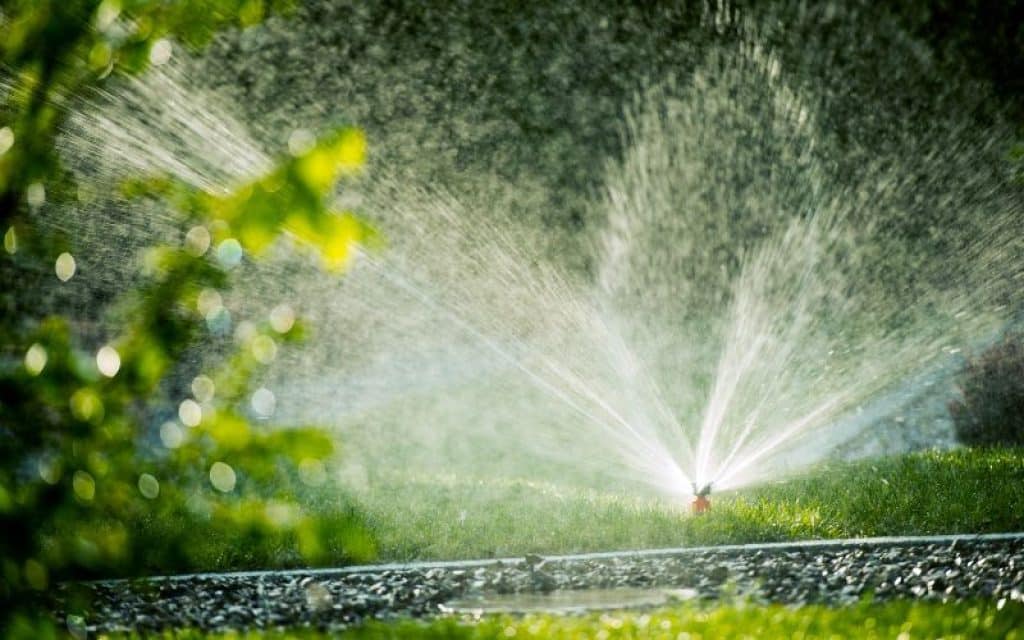
What is the Importance of Proper Watering
Proper watering is crucial for successful grass seed growth as it ensures consistent moisture levels, promotes germination, helps establish a healthy root system, and ultimately contributes to a green and thriving lawn. Inadequate or excessive watering can hinder grass seed germination, stunt growth, or cause various lawn issues.
Grasp the Basics: Grass Seed and Germination
Understanding the germination process and how it varies among grass types is essential for successful lawn growth. Each grass type has a different germination rate influenced by factors like watering, temperature, soil drainage, and seed quality. By monitoring these factors, you can provide optimal conditions for your specific grass variety.
Grass types and germination rates: Cool-season grasses such as Kentucky bluegrass and ryegrass typically have a germination rate of 14-30 days, while warm-season grasses like Bermuda and Zoysia may take 10-30 days. Knowing the appropriate germination rate for your grass type will help guide your watering schedule.
Watering: Maintaining consistent soil moisture is necessary for grass seed germination and successful growth. Too little water can cause the seeds to dry out, while too much water can drown the seeds or lead to fungal issues.
Temperature: Optimal soil temperature is crucial for germination. Cool-season grasses require soil temperatures between 50-65°F (10-18°C), and warm-season grasses germinate best between 65-75°F (18-24°C).
Soil drainage: Proper soil drainage is important to prevent over-saturation and support healthy root growth. Well-draining soil allows the seeds to remain sufficiently moist without becoming waterlogged.
Seed quality: High-quality and fresh grass seeds have a higher chance of successful germination, ensuring a better lawn establishment. Choose seeds that are appropriate for your climate and soil conditions for the best results

Establish a Watering Schedule for Your New Grass Seed
Initial watering: Before seeding, pre-soak the area to create a damp environment that promotes seed germination. Saturate the soil to a depth of 6-8 inches, as this encourages root development and growth. This step lays the groundwork for a resilient and healthy lawn.
Maintaining moisture levels: Proper moisture levels are vital for grass seed development. During the germination period, it may be necessary to water the seeds two or even three times a day to keep the soil surface consistently moist. As the grass begins to grow, adjust the watering frequency to prevent over-saturation and encourage deep root growth.
Weather and temperature considerations: Keep an eye on weather conditions, as they directly impact moisture levels. High temperatures and dry weather may require more frequent watering, while cooler and wet conditions will reduce the need for supplemental irrigation. Additionally, ensure soil stays moist during hot spells by watering in the early morning or late afternoon to minimize evaporation.
Spot the Signs: When to Stop Watering New Grass Seed
Knowing when to reduce watering is essential for the transition from germinating grass seed to established lawn. Pay attention to grass height indicators and root depth, as these signs will help inform when to decrease watering frequency.
Grass height indicators: Each grass variety has a recommended mowing height, which can serve as a guide for optimal growth. When your new grass approaches its ideal height, it typically has a more established root system, meaning you can reduce watering frequency.
Root depth: Examine the root establishment in your lawn to know when to decrease watering. A well-established root system requires less water, as the grass can draw moisture from deeper soil layers. To assess root depth, gently try to lift a small section of grass. If it remains firmly rooted in place, it is a sign that the roots are well-established, and you can gradually reduce your watering frequency.
Transition from New Grass Seed to Established Lawn Care
Transitioning from new grass seed to established lawn care involves adapting your lawn maintenance practices to promote longevity and resilience in established grass.
Deeper and less frequent watering: Once the grass has matured, shift to a deeper and less frequent watering schedule. This approach stimulates roots to grow deeper into the soil, creating a more drought-tolerant and resilient lawn. Water your established lawn to a depth of 6-8 inches, allowing the top layer of soil to dry between waterings. Generally, watering once or twice a week is sufficient, but this varies based on factors like temperature, rainfall, and grass type.
Monitor lawn health: Regularly inspect your lawn to identify any issues early, ensuring prompt corrective action. Keep an eye on your lawn’s color, grass blade appearance, and root growth to determine if adjustments to watering frequency, mowing height, or fertilization practices are needed. A healthy lawn exhibits a consistent green color with upright blades and deep roots, while signs of stress may include yellowing, wilting, or thinning grass.

Avoid Common Watering Mistakes
Overwatering: Overwatering can lead to a series of issues that hinder your lawn’s growth and appearance. Signs of overwatering include yellowing grass, wilting, and fungal growths. Excessive water can cause grass seeds to drown, lead to shallow root systems, or create a breeding ground for pests and diseases. To avoid these problems, allow the soil to slightly dry between waterings, ensuring proper aeration for root development.
Under-watering: Inadequate water can cause grass seeds to dry out and fail to germinate, resulting in a thin or patchy lawn. Additionally, under-watered established lawns may develop weak, shallow roots, leaving them vulnerable to stress, pests, and diseases. Prevent this by keeping soil consistently moist, without over-saturating it.
Extra Lawn Care Tips for a Lush, Green Yard
To maintain a beautiful and healthy lawn, consider these additional lawn care tips that go beyond watering strategies.
Mow properly: Proper mowing practices promote a lush and green yard. Use sharp mower blades to ensure a clean cut, reducing the chances of disease or pest infestation. Remove only one-third of the grass height at a time to avoid stressing the grass. Follow the recommended mowing height for your specific grass type and adjust your mowing frequency based on the lawn’s growth rate.
Fertilize: Fertilizing your lawn provides the essential nutrients needed for growth and overall health. Follow the manufacturer’s guidelines and take into account the grass type and local soil conditions when choosing a fertilizer and application schedule. Perform a soil test to determine missing nutrients and apply the appropriate fertilizer accordingly.
Aerate and overseed: Aeration improves oxygen flow, water absorption, and nutrient uptake by loosening compacted soil. Use a core aerator to remove small plugs from the soil, allowing air and water to penetrate the ground more easily. Overseeding involves evenly spreading grass seed over the existing lawn, which fills in bare or thin spots and maintains a thick, healthy lawn density.
Conclusion
In conclusion, a lush and thriving lawn requires proper care and attention to watering, mowing, fertilizing, and aerating. By understanding the needs of your grass seed type and maintaining an optimal watering schedule, you can avoid common mistakes and promote strong root development.
Furthermore, regular lawn care practices, such as mowing correctly, fertilizing based on soil health, and incorporating aeration and overseeding, contribute to a beautiful, vibrant yard. With dedication and attention to these strategies, you can cultivate a stunning, resilient, and green lawn that will be the envy of your neighborhood.

Watering Grass Seed FAQs
How often should I water new grass seed?
Water daily, or even two or three times a day, to keep soil moist.
Can I overwater new grass seed?
Yes, overwatering can lead to issues like drowning or fungal growth. Ensure consistent moisture without over-saturating.
When can I mow my new grass?
Wait until your new grass is at least 3 inches tall for a strong root system.
What type of fertilizer should I use on new grass seed?
Choose a starter fertilizer formulated for new grass.
Should I water new grass seed in the morning or evening?
Water in early morning or late afternoon when temperatures are cooler to prevent evaporation and effective watering.
Colin Macmillan is a seasoned entrepreneur and the CEO of Riverwood Landscape, a leading landscaping company based in Canada. He has been at the helm of the company since leaving high school, demonstrating his strong leadership skills and business acumen.
Colin’s expertise lies in various aspects of landscaping, including lawn care, interlocking, sod installation, and commercial maintenance. His hands-on approach and dedication to the craft have been instrumental in building Riverwood Landscape into a reputable brand.
One of his most notable achievements is the creation of a successful landscape franchise that services multiple locations. This accomplishment underscores his strategic thinking and ability to scale operations effectively.
Colin has also had the privilege of working with Guelph Hospital for landscaping and maintenance, a testament to the trust and reliability that his company has earned over the years.
His professional mission is to offer the best services and experiences for customers, a goal that he tirelessly pursues. Colin’s commitment to excellence and customer satisfaction continues to drive the growth and success of Riverwood Landscape.








